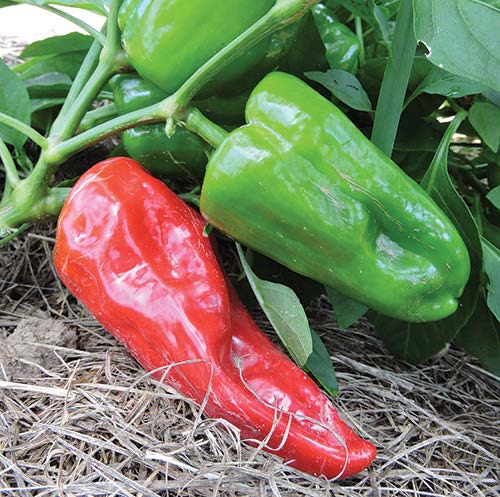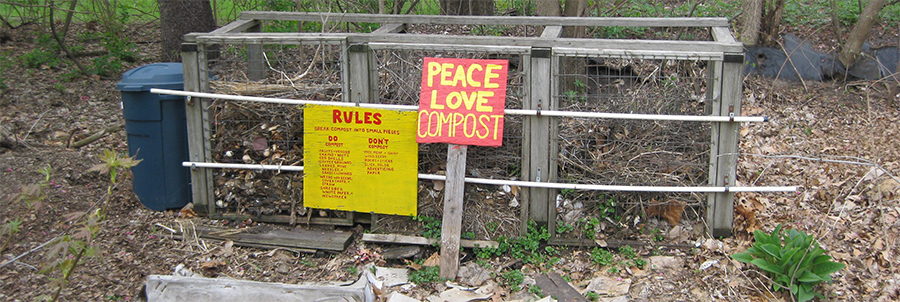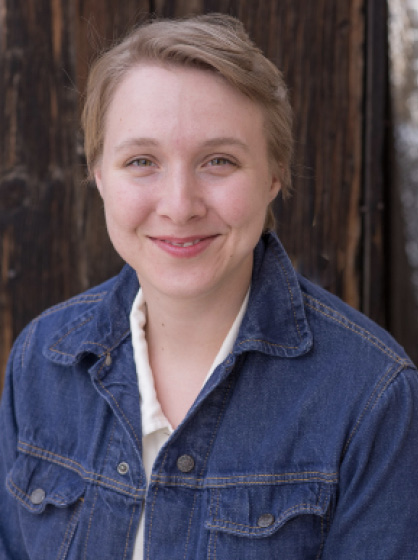Humans have always shared. It’s in our nature to share. Sharing creates and sustains relationships and enhances knowledge, it protects us from ignorance. It’s powerful. It confirms identity. It helps reach goals, increases competence, and brings rewards. And knowledge sharing, not just germplasm sharing, is going to be the other major feature here. Knowledge sharing is a fundamental process of civilization, it is central to learning, it deepens identity, and it creates community… And sharing knowledge and information about the genetic diversity in our seed banks can help farmers and breeders to enhance the sustainability and resilience of our agricultural systems. Dr. Susan McCouch
The industrialization of agriculture and the transformation of the seed industry during the last century have dramatically changed the way farmers and consumers think about and interact with our agricultural and culinary heritages. However, industrial agriculture has undermined the once-common process of creating and maintaining local plant varieties. In response, many organizations and individuals have been trying to reconnect farmers and gardeners with this process. I have been lucky enough to be part of this effort through my years as an employee at Seed Savers Exchange. Sharing knowledge, as Dr. McCouch said, really is the most important part of creating dynamic and resilient seed systems. Let me share with you the story of Seed Savers Exchange, the networks that its members have created, and offer you a personal look at one family’s seed story.

A messy scene after a seed swap at Seed Savers Exchange in 2016.
I listened to Dr. McCouch’s speech under the shade of a large yellow tent at Heritage Farm, the 890-acre headquarters of Seed Savers Exchange. Seed Savers Exchange is an agricultural non-profit and the largest non-governmental seed bank in the United States. Seed Savers’ story began in 1975, when Diane Ott Whealy and Kent Whealy received a gift of morning glory seeds from Diane’s grandfather in Festina, Iowa. That day, Diane learned that the flowers had been passed down to her grandfather from her great-grandfather who immigrated from Germany. She immediately felt a connection to a country she had never seen and a generation of her family that she had never met. When Diane and Kent moved away from the Midwest, she took these seeds with her so that she would have a living memory of her grandparents’ garden.

The flowers of a California poppy, Eschscholzia californica, growing at Seed Savers Exchange in 2015. The author collected seeds of this variety at the International Seed Library Forum in Tucson, Arizona.
Diane realized when she inherited this family heirloom flower that many other Americans must have similar stories. She and Kent put out a call for gardeners to share their seeds. That first year, in 1975, thirty people shared almost a hundred varieties of seeds. As the organization grew, people began entrusting their family and community heirloom seeds to Seed Savers Exchange for preservation. Diane and Kent decided to buy a farm and make Seed Savers Exchange their life’s work.
Over the next decade, the seed collection became so large that Seed Savers Exchange established a formal department to handle these acquisitions. The preservation department at Seed Savers Exchange now maintains a collection of over 20,000 unique varieties from over 80 crop species. This collection includes annual crops as well as perennial plants like apple trees and grapevines. Every year, the department’s curator chooses 500-800 varieties that will be grown out for evaluation. The evaluation team spends its days measuring plants, taking notes on leaf shape, flower color, and a host of other crop-specific characteristics. Crops are also grown out by the preservation department for seed regeneration. Gardeners still mail small quantities of their heirloom seeds to Seed Savers Exchange for preservation. These seeds are often accompanied with letters from grandmothers and granddaughters, fathers and sons, describing the history of the seed. The preservation department must grow out these seeds to ensure adequate population sizes for storage and future plantings. Additionally, two seed historians work to document the stories behind these varieties. The preservation department now has a staff of around fifteen people who work together to steward the histories of the 20,000 varieties of plants that have been entrusted to Seed Savers Exchange.
I’ve come to realize that Seed Savers Exchange has two seed banks. One sits in a hill on the campus at Heritage Farm. The other is not situated in a place and does not have a vault door or a thermostat or an elaborate back-up generator. That seed bank is broken into pieces that are tucked away in cupboards and pantries all around the country. The gardeners who participate in the Seed Savers Exchange are all managers of this large, dispersed seed bank. Every member holds a small fraction of the total sum of seeds in the Exchange. The value of this seed bank can be seen in the connections it creates among gardeners, the diversity it saves from disappearance, and the beauty and flavor of the countless plants that we all grow and love.
This decentralized seed bank has a name; it is called the Yearbook. The Seed Savers Yearbook has a long history, stretching back to those original thirty gardeners who shared seeds in 1975. In 2016, more than 800 people offered more than 16,000 unique varieties through this seed exchange. The Yearbook is a 600-page volume, printed annually, that lists thousands of plant varieties offered by individual gardeners around the world. Most of these varieties are not available through any other seed catalogs or stores. In some cases, only one or two people steward these varieties and their stories. The researcher and author Renée Vellvé explains the cultural importance of seed saving and genetic diversity in this passage:
The crops we grow did not fall out of the sky. They are a living heritage. Generation after generation, people have been tailoring plants, watching them, learning from them and passing the good results on. Be it a certain potato that could withstand late spring frosts in Sweden or a radish that wasn’t so sharp that a Spaniard would find it inedible, gardeners and farming families have created, hands-on, an incredible panorama of different crop varieties to suit their own needs, customs, and tastes. And in so doing they lay their story down and give that story a name, often suggesting the plant’s origin or qualities. Just as stories have to be told, plants have to be reproduced—or they simply fade out of existence.2
Portrait of a preservation
I have learned that relationship-building and storytelling are perhaps the most important parts of seed saving. In 2015, I had the opportunity to meet three generations of a family who all share a special connection to their Italian heritage, to gardening, and to each other through the preservation of an heirloom pepper. This story is representative of hundreds of similar stories that have unfolded through Seed Savers Exchange’s network throughout the decades. But, in certain ways, this story is also exceptional. This is the story of the Ogle-Riccelli’s and the Ausilio pepper.
The story starts in the late winter of 2015 in the basement office of our preservation department. I was sitting next to our collection technician and our seed historian. They were talking excitedly about a series of documents that had just arrived. Our seed historian exclaimed that this was the most thorough documentation of any variety in our collection. Through letters, emails, and phone calls, our collection technician had gathered over 20 pages of information about the Ausilio pepper from the Ogle-Riccelli family in Des Moines, Iowa. That day, we started planning a trip to visit the Ogle-Riccellis. Although Seed Savers Exchange’s collection is composed of thousands of home-grown varieties of fruits and vegetables, we hadn’t often made time to visit the homes where those varieties were grown. Our contact with the Ogle-Riccelli’s made us want to change that, and our visit to their home was the start of a new vision for seed history documentation in our department.
On a rainy Monday in October of 2015, three colleagues and I drove through the tidy suburbs of southern Des Moines to a quiet neighborhood of brick ranch houses. We were met by Chad Ogle-Riccelli, his wife, Michele, his mother, Theresa, and his three children. They quickly walked us through the house and made their way out to the garden. They had a lot to show us. Our seed historian and our collection curator talked with Chad and Michele about their garden. I stood by and chatted with Chad’s 90-year-old mother, Theresa. Theresa remembers her parents growing and cooking with these peppers throughout her childhood. She was charmed when I pronounced her name in Italian, saying that she hadn’t heard anyone say her name like that since her parents passed away.

The Ogle-Riccelli family visiting Seed Savers Exchange for the first time in 2016. Photograph courtesy of Seed Savers Exchange.
Theresa’s parents, Giovanni Ausilio and Rachel P. Scarcello, moved to Des Moines from Italy in the early 1900s. They met each other in their Italian-American neighborhood and were soon married. The pepper is so central to the family’s food culture that, several years ago, they created a cookbook with recipes that utilize the pepper and many photographs of Ausilio family members. When Chad and Michele invited us inside for supper, we were treated to three of these dishes. As an appetizer, we had Sardas, a savory roll made with pepper paste and anchovies. Our main course included a pasta topped with pepper sauce and spicy roasted peppers preserved in oil. We shared glasses of Italian wine and offered our gratitude for the family’s hospitality.
After supper, we gathered in the family’s living room. We talked for hours with Theresa about her family history and about their Italian-American neighborhood. Chad and Michele had been discussing the possibility of donating their family heirloom to Seed Savers Exchange. We talked with them about the steps we would take to preserve the seeds and their history. Ultimately, Chad and Michele said, the decision was up to grandma Theresa. They were her seeds. At the end of the night, Theresa handed us a jar of Ausilio pepper seeds. It was a quiet, sacred moment of trust. We thanked her for her stewardship of the pepper and promised her that we would cherish it and its story.

Through the Ogle-Riccelli family’s generosity, Ausilio peppers have been added to the Seed Savers catalog. Photograph courtesy of Seed Savers Exchange.
Last year, we invited the Ogle-Riccellis to visit Heritage Farm. The family stayed in the farmhouse where Kent and Diane once raised their children. Our facilities manager took them on a tour of the property; our preservation department showed them through the field where we were growing out their pepper, and the kids got to run around the farm and see hundreds of different varieties of vegetables that had been shared with us by other families like theirs. Shortly after their visit, Chad and Michele sent us three jars of canned pepper sauce, some Parmigiano-Reggiano cheese, and handmade Italian pasta. We cooked up a feast in our department kitchen and sat down to a traditional Ogle-Riccelli meal.
This is what seed saving is all about. In one of the many letters he exchanged with Seed Savers Exchange, Chad wrote, “As Grandma would tell you, they are her family seeds. Something that special, you love and pass on for generations to come… These peppers are part of our heritage.”
The story behind the seeds
It is not simply the flavor of the Ausilio pepper that makes me want to grow it, save its seeds, and serve it to my friends and family. The story behind the pepper is the most compelling reason for me to plant it in my garden. For me, the Ausilio pepper’s story perfectly captures the importance of Seed Savers Exchange’s work.
One organization cannot steward a nation’s agricultural biodiversity, though. Stories like this one need to be shared in order to keep the genetic diversity that accompanies them alive. It is the networks and relationships that Seed Savers Exchange and other grassroots organizations have created which will be key players in preserving this biodiversity for years to come.
So get out your gardening gloves, head over to the farmers market, find a local seed library, or talk to your family and explore your own seed story. All it takes is one person to save a seed, a story, and an important piece of our shared cultural heritage.

The flowers of Amish Cockscomb in bloom in the author’s 2015 garden at Heritage Farm. This plant, a variety of Celosia cristata, was found in an Amish garden in Arthur, Illinois and donated to Seed Savers Exchange by Orral and Joan Craig.


